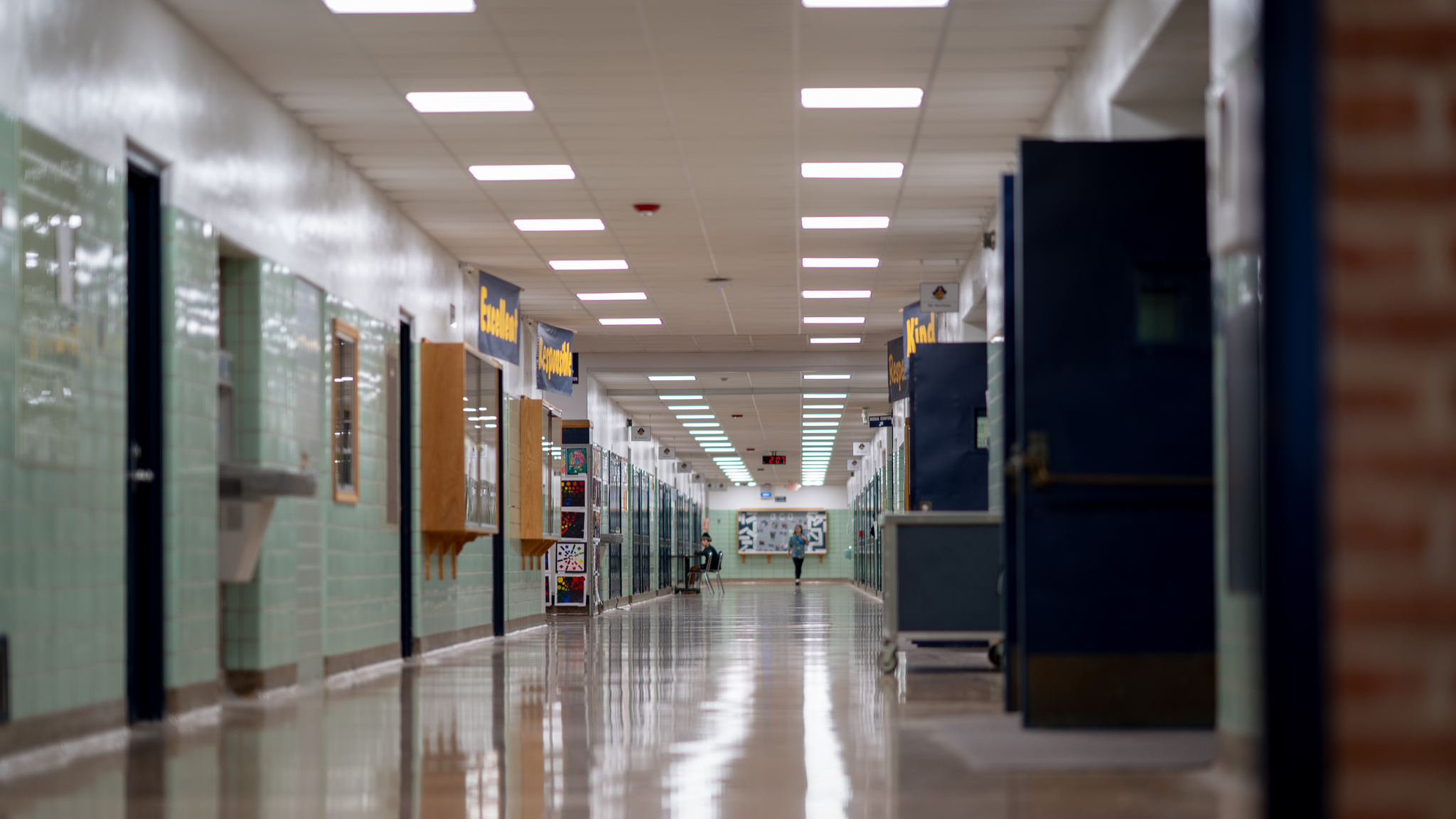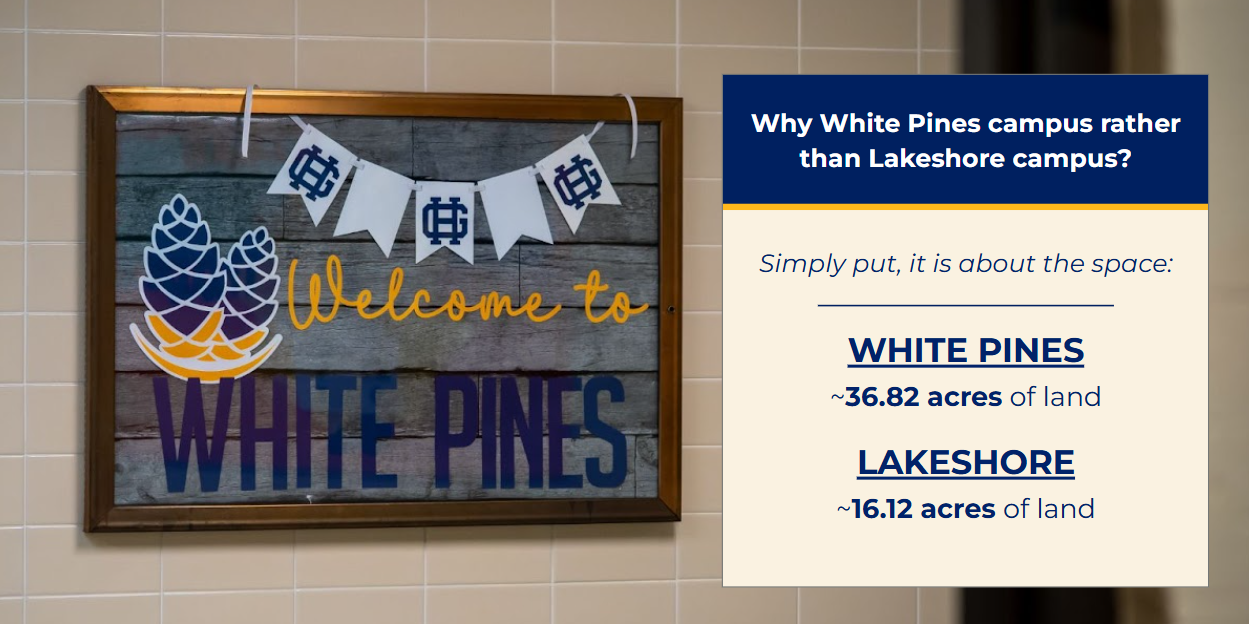
2025 Master Plan
Fall 2025 Update
Over the past year, Grand Haven Area Public Schools has engaged staff, families, and community members in developing a long-term Master Plan to guide how we invest in our facilities for the future.
Following more than 40 community meetings, school presentations, and nearly 1,400 survey responses this fall, we presented our GHAPS Board of Education with an update on our findings during its October 17, 2025 Board Retreat meeting. The School Board then asked our district to return during its November 17 meeting with a formal recommendation for consideration, as well as potential timelines for future bond measures to support the Master Plan strategies.
Survey Results
Total Responses: 1,399
780Parents & Guardians | 348GHAPS Staff | 271Community* |
*Students, alumni, and other community members.
What We Heard
Through our survey and engagement sessions, we asked the community to weigh in on several potential configuration options for the future of our schools and our district. Based on the feedback we received, as well as the current and future needs of our district, the following themes have risen to the top:
Facilities & Planning
Support for modernization and renovation
Opposition to consolidating too many elementary schools or decommissioning buildings
Concern over large class sizes/ overcrowding
“Appropriate” location for 5th-grade students
Bond cost and tax impact
Operations & Logistics
Concern: Traffic and transportation
Concern: Job security and staff placement
Programs & Opportunities
Expressed interest in keeping Central High School separate from GHHS
Requests for athletics and extracurricular activity spaces
Assurance of Special Education spaces and programs
Engagement & Trust
Appreciation for community engagement
Expressed interest in continued trust and transparency throughout the process
What’s Being Considered
Based on the feedback, facilities data, and program needs, GHAPS is exploring a long-term framework that could include:
1) A 5–8 campus at the White Pines and Griffin properties
Expand White Pines and connect the current Griffin and GHAPS Education Service Center sites into a single 5–8 campus, including separate 5–6 and 7–8 wings, under one roof.
2) Maintaining and improving five elementary schools
Maintain and upgrade five elementary schools, absorbing Griffin Elementary for the 5-8 campus White Pines expansion.
3) Grand Haven High School Upgrades
Utilize available space for career-readiness opportunities, as well as for arts and athletics improvements.
4) Lakeshore Site Utilization
Reimagining Lakeshore Middle School as a future innovation and community partnership hub with space for alternative education and district offices.
No existing schools would be left vacant or decommissioned under these concepts.
Other Considerations
- Early Childhood Expansion (3 Total Locations):
- Duneside Discovery Center (ages 0-5 years)
- Lake Hills site (ages 0-5 years)
- Robinson site (ages 0-5 years)
- 152nd and Lincoln Site (Undeveloped): Hold as an asset for future use
- Central School Options: Expanded 0-3 programming
What's Next?
Final Master Plan Recommendation
At the next Board of Education meeting, the district will present the final Master Plan and a formal recommendation for adoption. Approval of the proposed plan does not place a bond on the ballot—but it confirms the district’s long-term direction.
Epic MRA Community Survey
This month, an independent firm will begin conducting a scientific survey of individuals in our community to gather targeted input on master-plan priorities, gauge perceptions, and determine support for various potential timelines and funding levels. These results will help guide the scope, timing, and structure of any potential bond proposal.
What Comes After
If the plan is adopted in November, GHAPS will begin a pre-bond planning phase, including continued communication and opportunities for staff, families, and community members to stay engaged and informed.
Learn More
Educational Research on 5th-8th Grade Models
CONTRIBUTORS TO SUCCESS & ACHIEVEMENT:
- Fewer transitions
- Longer grade spans
- Teacher specialization
- Maximize support for students with Individualized Development Plans (IDPs) with centralized services
- Strong transition routines programs
- Teachers of the same subjects in the same building contribute to achievement with vertical alignment, focused PLCs, and an extended feedback loop for students
- Collective expertise
OTHER RESEARCH:
- Strong programs outweigh grade configuration
- Research favors 5th grade at elementary when it adds transitions and shorter grade spans
- Social-emotional support during intermediate/middle school years contributes to achievement and wellness
Recent peer-reviewed research has shown that the transition to middle school leads to measurable declines in academic performance, particularly for students with disabilities.
Consolidating our 5th- and 6th-grade students into the same building as our 7th- and 8th-graders provides an opportunity to…
- Reduce unnecessary disruptions
- Preserve peer and staff continuity
- Enhance learning experiences by providing developmentally appropriate and inclusive opportunities for all learners
O’Hagan, K., Stiefel, L., & Schwartz, A. E. (2023). The academic effects of moving to middle school on students with disabilities relative to their general education peers (EdWorkingPaper No. 22-655). Annenberg Institute at Brown University. https://doi.org/10.26300/1vfx-x027

Understanding School Finance
STATE AID(School Aid Fund / SAF) | LOCAL FUNDING | FEDERAL FUNDS |
|
|
|
Question: What is the 18-mill GHAPS operating millage, and how does it impact the district's budget?
The 18-mill operating millage is a tax on non-homestead property—such as businesses, rental properties, and second homes—and is required by the State of Michigan for all public school districts.
It does not apply to primary residences. This local tax does not increase how much funding GHAPS receives per student — it simply allows us to collect the local portion of the state-set foundation allowance. If the millage isn’t approved, the district cannot collect its full allowance, and the state does not make up the difference.
Bonds vs. Sinking Funds
BONDS | SINKING FUNDS |
|---|---|
Address major upgrades and new facilities. | Address smaller projects and ongoing repairs between bond cycles. |
|
|
Used together, Bonds and Sinking Funds help school districts ensure:
- Predictable facility funding and upkeep that helps protect general fund dollars to support our students and classrooms
- Reduced emergency repairs
- Responsible long-term stewardship
Millage Rate Comparisons
The charts below compare GHAPS' total millage rates (including both sinking funds and bonds) with those of other area districts, as well as regional and state averages.
Key Insight:
Grand Haven Area Public Schools maintains the lowest total millage rate of all districts in Kent, Ottawa, and Muskegon Counties—less than one-tenth of the regional average.
Past Presentations
View the full July 21, 2025 Board Meeting Presentation
Watch Superintendent Perkowski’s September 22 Rotary Club Presentation
Correction: During the July presentation, Superintendent Perkowski referred to the enrollment of Central High School when discussing high school building considerations. This year’s Central High School enrollment is nearly 60 students, up from the 40 cited during the presentation. We apologize for this discrepancy and have corrected it in all updated materials.
Summer 2025 Master Plan Update
During its regular meeting on Monday, July 21, 2025, the GHAPS Board of Education was presented with a series of early-stage Master Plan concepts aimed at aligning the district’s physical spaces with the long-term goals outlined in its Strategic Plan. Three original concepts were shared as conversation starters for the board and community.
The concepts presented explore different ways the district might improve or reconfigure its facilities in response to shifting enrollment, aging infrastructure, and evolving student needs.
Each was grounded in the three key themes outlined in our Strategic Plan:
- Rigorous, Relevant, & Engaging Learning
- Financial Responsibility & Sustainability
- Communication, Transparency, & Trust.
Learn more about the Strategic Plan at www.GHAPS.org/strategicplan.
Following that presentation, GHAPS gathered additional feedback through a community survey to better understand priorities within each of those concepts. Based on community input, the district refined its focus to explore the specific components of each idea and introduced an additional concept that emerged from early stakeholder conversations.
The survey closed in mid-October, and an updated presentation summarizing the feedback and next steps was shared with the Board of Education during its October 17, 2025 Board Retreat Meeting.
Master Plan vs. Strategic Plan
 While our Strategic Plan lays out a clear vision for innovation, excellence, and engagement, the Master Plan asks what kind of learning environments we need to bring that vision to life. This is about preparing our district to meet the future—together.
While our Strategic Plan lays out a clear vision for innovation, excellence, and engagement, the Master Plan asks what kind of learning environments we need to bring that vision to life. This is about preparing our district to meet the future—together.
Strategic Plan: Defines the district’s educational goals and priorities, focusing on student success through innovation and academic achievement.
Master Plan: Turns those goals into action, focusing on the physical environment, safety, capacity, and infrastructure needed to support modern learning.
Both are aligned and interconnected to ensure GHAPS is prepared to meet the evolving needs of students and the community.
